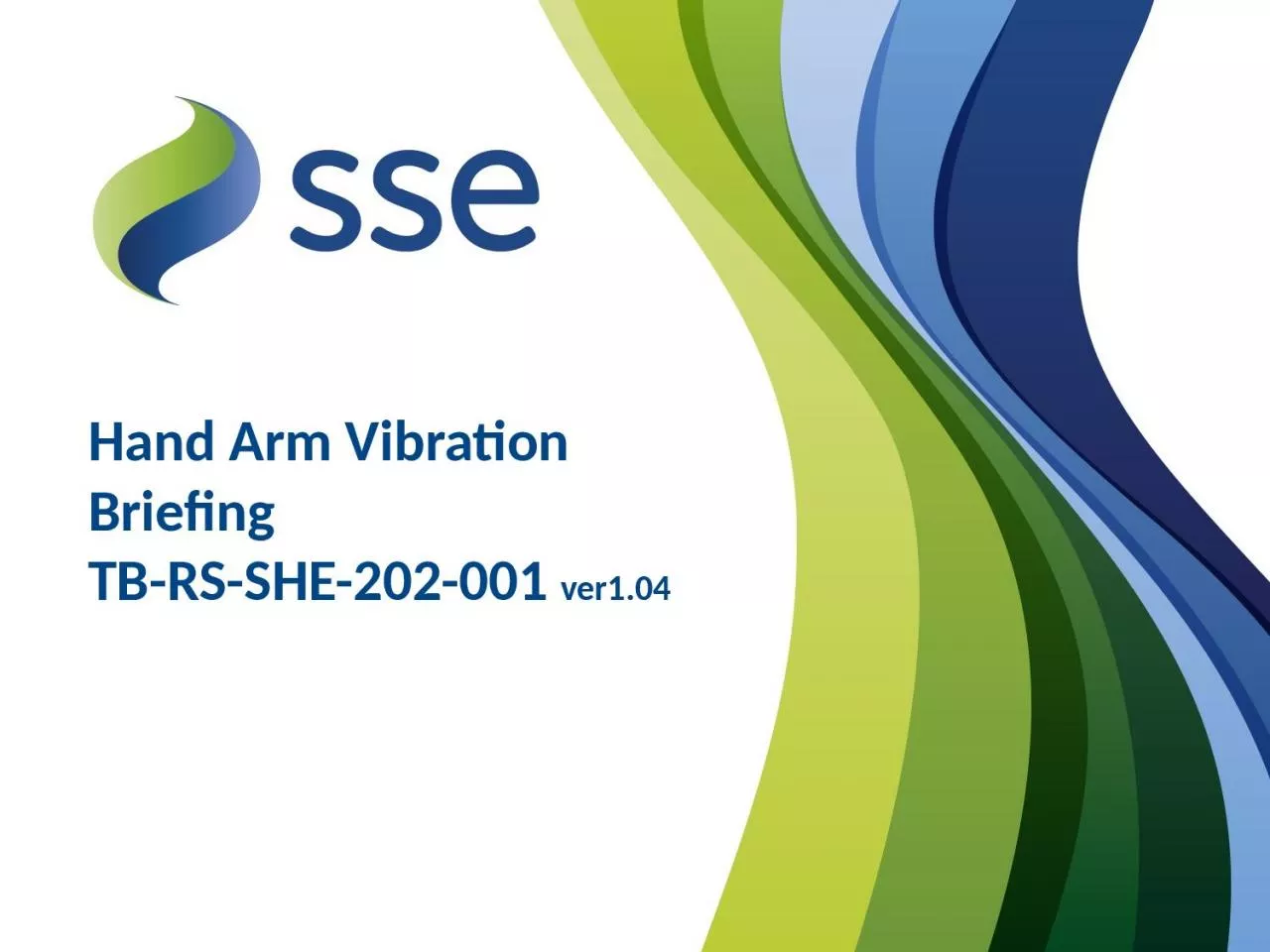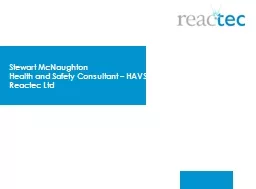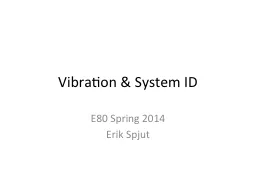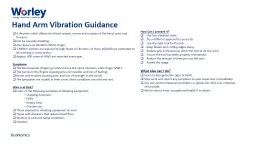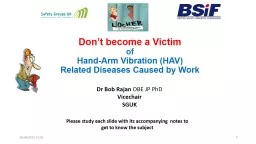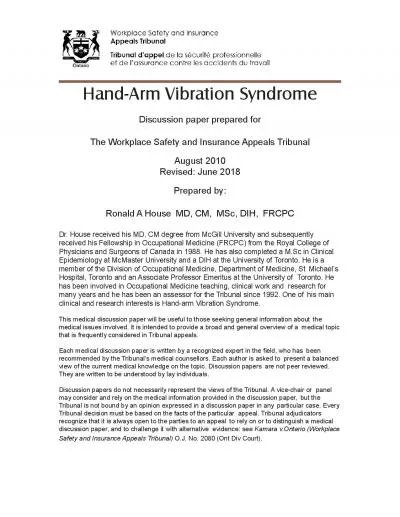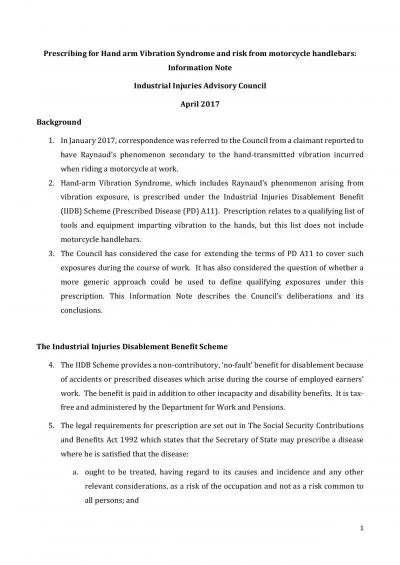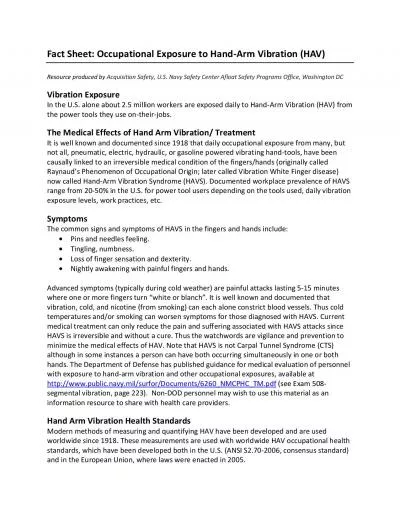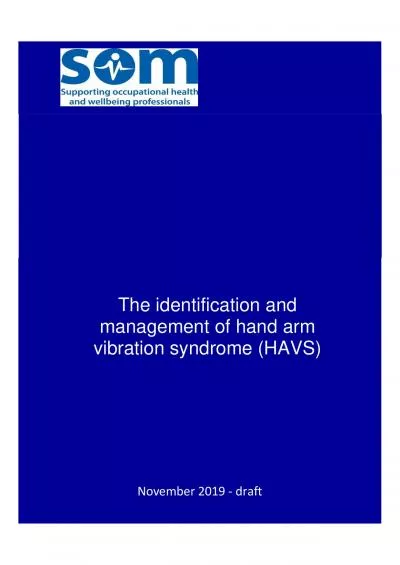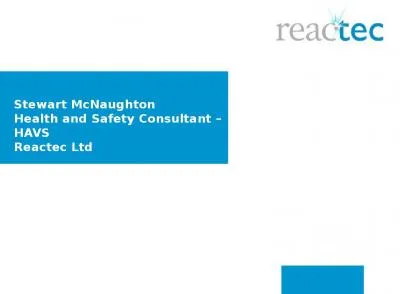PPT-Hand Arm Vibration Briefing
Author : bella | Published Date : 2022-06-28
TBRSSHE202001 ver104 What is Hand Arm Vibration HAV It is caused in industries associated with heavy or vibrating machinery Examples road breakers rock drills
Presentation Embed Code
Download Presentation
Download Presentation The PPT/PDF document "Hand Arm Vibration Briefing" is the property of its rightful owner. Permission is granted to download and print the materials on this website for personal, non-commercial use only, and to display it on your personal computer provided you do not modify the materials and that you retain all copyright notices contained in the materials. By downloading content from our website, you accept the terms of this agreement.
Hand Arm Vibration Briefing: Transcript
Download Rules Of Document
"Hand Arm Vibration Briefing"The content belongs to its owner. You may download and print it for personal use, without modification, and keep all copyright notices. By downloading, you agree to these terms.
Related Documents

